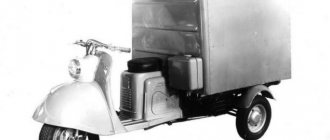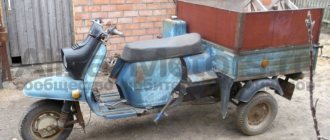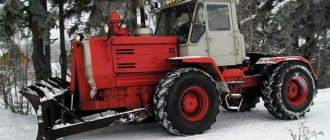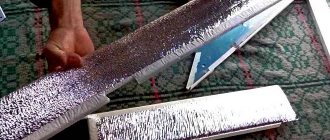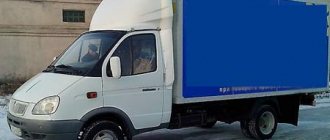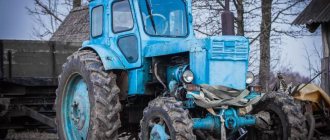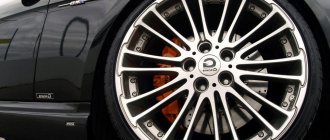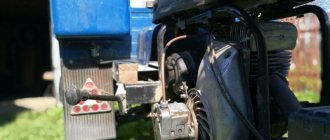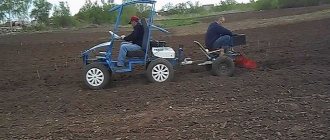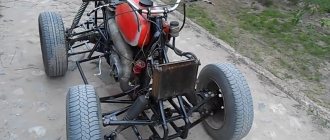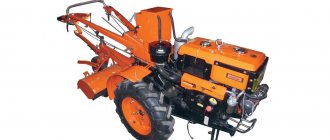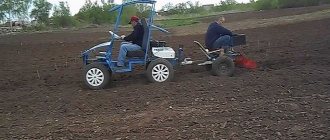At present, the development of agricultural machinery has reached a high level of development. It is difficult to imagine a modern farmer without a cultivator or walk-behind tractor.
There are many varieties of walk-behind tractors on sale, but most store-bought ones are designed for small areas - up to 6 acres. There are more powerful industrial-type units, but their price will be much higher. Considering that the structure of walk-behind tractors is not so complicated, you can make a walk-behind tractor with your own hands.
Characteristics of the Ant scooter:
According to the official documentation, the Ant scooter has the following parameters:
- load lifting capabilities - 250 kg,
- cargo compartment - 1250*1130 mm,
- loading platform height - 600 mm,
- weight - 240 kg,
- turning radius - 3.5 m,
- maximum permissible speed - up to 60 km/h,
- fuel consumption - up to approximately 6l/100km,
- single cylinder engine,
- fuel reserve - up to 13 l,
- Gearbox: 4-speed
- independent, hydraulic suspension.
As you can note, the characteristics of the model are quite attractive. Ant is a scooter worthy of attention.
Homemade ants
Post by kudrik » Dec 19, 2013, 05:23 pm
Good day to all like-minded people. Allow me to introduce another tractor, or rather its step-by-step assembly. The VAZ bridge was recently shortened and a frame was made, the motor was trimmed along the flanges to 80 cm, and the frame was made of quadruple pipe.
The front beam is made from wheels and steps from an SZD motorized stroller.
The engine gets used from Ant.
A reverse gearbox of the same Ant is installed between the engine and the bridge, which will provide reverse and the necessary reduction in speed for an acceptable speed and increase traction to the required power moments when plowing. That's all for now, as soon as I assemble the gearbox and front ball, I'll post it right away with a photo report.
Post by kudrik » Dec 22, 2013, 00:44
I overcooked the frame a bit.
in labor, an axle is turned and welded on which the front beam will rest. But the rack and steering column, the rack is shortened to the required size and secured to the front beam.
That’s all for now, tomorrow is a holiday, I don’t know if I’ll do anything while the front beam is next.
Post by kudrik » 24 Dec 2013, 09:39
Yesterday I chemically modified the beam, I had to bend it in place, this is what happened.
you need to reinforce it with gussets and weld a bushing in the middle for the mount.
Post by kudrik » Dec 24, 2013, 8:54 pm
Post by SanychSan » December 24, 2013, 21:03
Post by kudrik » Dec 24, 2013, 9:16 pm
Post by kudrik » Dec 27, 2013, 04:53 pm
I tried on Nivav wheels, everything really looks better.
Today I took hold of the steering rack, struggled, shortened it to the minimum size, and still it turned out to be too big, I spat on it and threw it into the corner of the garage. I took two Zhugulevsky long tips, welded the threaded bushings together and simply tied the two wheels with a transverse rod, I will install the Zhigulevsky steering column.
Motor scooter Ant - tuning
Every driver dreams of upgrading his own vehicle. And here fantasy knows no bounds, and external tuning becomes a way out of the situation. How can you improve your Ant scooter - tuning will be the best solution. You can paint the wings, hood, body and thus transform the model.
Before carrying out work, the vehicle is carefully prepared: cleaned, sanded, degreased.
As you know, scooter owners love to use various stylish bells and whistles, and external tuning allows you to transform the device. There are a great many options for external transformation of your favorite iron horse, and the owners of the Ant scooter are not alone in their desire, because the Voskhod 3M motorcycle is an equally popular model for tuning. Even an inexperienced motorcyclist can do tuning of Voskhod 3M with his own hands. You just need to pay attention to this and use your imagination to make your old man sparkle with new colors and get an attractive appearance.
"ANT" BODY FORWARD
The angle of inclination of the pivot bushings is 12° due to the use of wheels measuring 6.70-10" - driving and 4.00-10" - driven. At this angle, the plane of the mini-truck frame is parallel to the road. The angle can and should be changed when using four wheels measuring 4.00-10“.
Modified front suspensions of two Ant scooters were used as rear suspensions. The modification boiled down to replacing the king pin and attaching an additional elbow to the fork, which strengthens the connection between the fork and the swing arm.
The seat frame with the driver and passenger seats is attached to the rear axle beam with its four upper brackets. Using two lower brackets (hinges) this frame is connected to the traverse eyes.
FRONT AXLE , let me remind you, leading. It includes: reverse gearbox, wheel suspensions, springs, shock absorbers, axle shafts, brakes - all from Ant. With some modifications, these units are located in their original places under the body.
The ENGINE of the mini-truck is “native”, T-200. Its power due to the installation of a head with a reduced combustion chamber was increased to 14 hp. Instead of the standard ignition system, a “magneto” is used, which makes servicing the power unit easier. The engine mount to the frame remains the same.
Gas control mechanism:
1 — cable in a sheath; 2 - emphasis; 3 - traction; 4 — pedal mounting bracket; 5 — gas pedal; 6 - carburetor (engine not shown).
Differential bearing cover:
1 — bearing 104; 2 — seal (rubber ring); 3 — cover body.
Modified universal joint fork.
Torque from the engine to the reverse gearbox is transmitted by a chain from the moped. To do this, the sprockets, driving (z - 14) and driven (z = 27), are adjusted to the mounting dimensions of this chain by reducing the thickness of their teeth on a lathe. High traction force was obtained by replacing the standard drive sprocket (z = 17) with a “Minsk” one with a smaller number of teeth (z = 14). The chain drive on the Pathfinder performed admirably; After a run of 800 km, the possibilities for its adjustment are far from exhausted. And the sprockets do not show obvious signs of wear.
TRANSMISSION. The standard gear shift lever has been replaced with a lever
from the high pressure fuel pump of a diesel engine, suitable for the size of the landing splines.
The Pathfinder is equipped with a reverse gearbox from the Ant cargo scooter. Its weakest parts are the axle shafts. At peak loads, they break, as they are weakened by the holes for the fixing pins, and have significant play - cardan joints with rubber couplings, as well as an ordinary suspension, do not at all contribute to the long service life of the axle shaft seats.
So that the chassis of the car does not fail, I solved the problem radically. To do this, I made new differential bearing caps, into which I pressed bearings 104, suitable for the seating dimensions of the axle shafts.
I also modified the universal joint forks: firstly, I shortened them; secondly, I ground the outside so that it became possible to recess the forks deeper into the covers and thereby increase the reliability of their splined connection with the axle shafts. After this, the pins securing the forks to the splined shafts became unnecessary.
My plans also include installing final drive gearboxes for the drive wheels. This will improve the overall weight of the structure, facilitate engine operation, and increase the traction characteristics of the mini-truck.
STEERING GEAR. When placing it on the frame of a mini-truck, I was faced with a problem: how, without disturbing the driver and passenger, to connect the steering wheel in front of the seats with the swing arms under the seats?
Having considered several options, I used a rocker linking the entire kinematics of the steering drive. The rocker is located on the top of a vertical shaft, which rotates in two ball bearings attached to the central knee of the frame with clamps.
Variable length tie rods are made of steel pipes and rods. At one end they have ball pins from the Zhiguli, at the other - rubber-metal joints from the Moskvich-2141. The rods allow you to adjust the amount of convergence of the steered wheels so that during movement all the gaps in the steering drive are selected under the influence of rolling friction forces and the wheels become parallel.
The steering mechanism itself is taken from the Niva car. A homemade column with a Moskvich-412 steering wheel on top is welded to it.
CONTROL SYSTEM. When I talk about it, I mean the mechanisms for controlling the brakes, clutch, carburetor throttle, and reverse gear.
The mini-truck uses an automotive control system: under
The driver’s right hand is the gear lever, under the left is the reverse gear, under the right foot are the gas and brake pedals, under the left is the clutch (the last two pedals are from a UAZ car, modified at the installation site). The brake pedals of the Tourist scooter are used as clutch and gas pedals.
Clutch and throttle control mechanisms are cable; brakes, gearbox and reverse gear - traction, rigid. The brake and gear lever rods are made adjustable in length.
The carburetor air enricher (“choke”) lever is located under the driver’s right hand - on the seat frame pipe.
Reliable brakes are the key to the safety of any vehicle. Even if the engine is not running, the brakes must always be in good working order - these words have a lot of meaning. Therefore, the design of the mini-truck uses the standard “Ant” mechanical brake system.
The brake pedal is connected by a rigid adjustable rod to the rocker—the brake force equalizer—and then to the drive (front) wheels. In the future, the Pathfinder will also have a parking brake acting on the steering (rear) wheels.
THE SEAT FRAME is a simple structure, welded from steel pipes of round, rectangular and square sections, and is bolted at six points: four of them are located on the rear axle beam and two under the traverses. If necessary, the frame can be easily dismantled, leaving free access to the steering gear.
The seat frames are made of thin-walled pipes with a diameter of 22 mm, the seat cushions and backrests are taken ready-made - from transport equipment. Vertical backrests provide the driver and passenger with a comfortable seating position. In addition, to prevent lateral displacement of riders during sharp turns, the seats were later equipped with armrests.
The FUEL TANK is made from the brake system reservoir of the KrAZ heavy-duty vehicle. To accommodate it, the arches of the former Ant seat frame were chosen: they are equipped with supports to which the tank is attached using clamps and rubber gaskets. Its capacity is about 35 liters, which is quite enough for a long drive. Fuel from the tank flows by gravity into the engine carburetor.
WHEELS. For steering wheels, scooter tires with a small, so-called road tread pattern are used. They cling less to dirt, quickly clean themselves, providing satisfactory handling off-road, and create less resistance when driving on asphalt.
For presenters, the choice is much wider. On a mini-truck, depending on the route and driving conditions, you can install any of four sets of wheels: “original” single or double, homemade with an “evil” all-terrain tread for off-road driving, or wide-profile ones from a “Tula” motorcycle. The last option is the most advantageous for the Pathfinder.
EXHAUST SYSTEM. Her placement was not associated with any difficulties. There is only one innovation here - an additional elbow at the muffler outlet, which made it possible to divert exhaust gases from under the body to the outside - to the right. This saved the driver and passenger from the inevitability of breathing exhaust fumes.
The BODY of the mini-truck is homemade with dimensions 1200x800x350 mm. Its load capacity is about 300 kg.
The body is made from sheets of metal air duct (sheet thickness - 1.5 mm). The sides are edged with an angle, but you can also use a small-diameter pipe, having previously selected a groove in it from below along the entire length. The edging is attached with an intermittent weld.
The fact that the body is of a tipper type is very convenient to use. Among other things, this allows you to lift it and do routine inspection and repair of the transmission without crawling under the car!
SPECIAL EQUIPMENT . For safe driving on the roads, the mini-truck is equipped with a rear-view mirror and lighting devices from Ant.
This equipment includes a rear bumper bumper, as well as a crankcase protection pan for Zhiguli cars with a spare wheel installed under the body.
To protect the driver and passenger, as well as the engine and other structural components from water and dirt, all four wheels are equipped with wings and mud flaps.
The wings of the drive wheels are made from parts of the housing of the internal chamber of a domestic refrigerator. For the rear wheels, parts of the front fenders of the Izhevsk motorcycle were used.
Three years of operation of the Pathfinder showed that it is quite viable. The good design of the mini-truck is attractive - many take it for an industrial design.
Based on the Pathfinder, you can make a four-wheeled motorcycle, a mini-tractor, as well as an all-terrain vehicle with pneumatics. Any of these machines will make the work of a summer resident, farmer or builder easier.
S.YAKISHEV, Krasnoyarsk region
We recommend reading
- CHAMPIONS' SPORTS PRODUCTS Before talking about the first model rocket, a few words about its designer, Alexander Tarasov. He lives in the small Siberian city of Yugorsk (Tyumen region), works...
- A TABLE ON TWO LEGS It is known: if furniture has legs, then, as a rule, it has four of them, in extreme cases - three. True, some objects may have one central support. But for two, that’s not...
Improving the carrying capacity, or making a dump truck out of Ant
The Ant scooter is a powerful device, but most owners are not averse to increasing the model’s load-carrying capacity. In addition, you can remake the body and make it folding (like a dump truck).
However, there are some nuances and the main thing is not to overdo it. As you know, the load capacity is about 250 kg; in practice, large loads can also be accommodated. But it should be remembered that with such a load the speed will be much slower (up to 35 km/h).
You can increase the load capacity by increasing the sides . However, the scooter frame will need to be strengthened.
Welding can be considered the most optimal option, but you can do it without it (the additional frame is made from wood).
In this situation, the body is moved forward or left in its place, but it is prohibited to move it back.
It is possible to consider the option of installing separate booths on such scooters, which will require separate costs.
The following mechanisms are most often used for a dump truck:
- cable winches;
- hydraulics with automatic drive;
- methods using door hinges, etc. (so-called “manual”).
As for hydraulics, you will also need to use a pump. The total costs with this approach may exceed the cost of the scooter itself.
Let's consider options for implementing the idea:
1. Using automation.
The body is attached to an additional frame, which is connected to the main frame using hinges. Lifting can be carried out using a diamond jack, which operates with a simple electric drive. The electric drive itself can easily be made using the window lifters of a simple car. This is the essence of automation, when the body tips over with the press of one button.
The only disadvantage of such a conversion is the final cost of the work. The price depends on the spare parts used.
2. Manual method.
The body, as in the automatic method, is mounted on an additional frame. The frame is also attached to the main one.
The convenience of this method is that, if necessary, it is possible to simply remove the body (for example, when you need to transport long pipes, etc.). Such long objects can be attached directly to the frame.
Subtleties of production
In practice, it is recommended to additionally install chains that will protect the loops from being pulled out. Ordinary door handles from household appliances or car mechanisms can serve as closures.
When constructing a removable body, you will also need to attach the tank, license plate, and turn signals directly to the frame (not to be confused with the body). It is necessary to ensure that the center of gravity is near the axes of the loops (about 30 cm in relation to the rear edge). This is the only way the body can be tipped over manually without any problems.
Possible problems
The advantage of using an engine from a scooter is standard forced cooling by air flow, which reduces the risk of overheating of the unit when driving the vehicle in off-road conditions. A reduction gearbox is introduced into the design, which is connected to the rear axle by a chain drive. A groove is cut into the axle housing into which the gear is installed. The axle gearbox operates without an oil bath; abrasive dust can enter through the gap, which accelerates wear of the axle shafts.
The standard motor from Ant is equipped with a reversible gearbox, which has thin metal walls. With increased load (for example, transporting cargo weighing 300-400 kg), the parasite shaft, which is located in a separate tide, pulls out. It is impossible to restore the structure; it requires the installation of a new unit or the manufacture of a homemade structure, which complicates the operation of the all-terrain vehicle.
Snowmobile from a walk-behind tractor
In winter, moving around the terrain becomes much more difficult, and buying even a used snowmobile involves significant financial costs. The solution to the problem is to convert the walk-behind tractor into a snowmobile. Everything you need for this can be found at the nearest landfill or scrap metal collection point. If you have enough money, modular tracks are purchased, installed instead of wheels on the axle shaft.
If we take an already manufactured tractor as a basis, then for work you will need:
- old wide wheels from an SUV;
- sheet steel with a width of at least 40 cm;
- conveyor belt with a cord base.
You can make a snowmobile in different ways. The choice depends on the skill of the vehicle owners and the availability of available materials.
Rework can be carried out in the following areas:
- Replacing standard wheels with wider ones that exert minimal pressure on the snow. If necessary, devices are attached to the wheels to increase traction (chains, ropes).
- Securing the wheels in wide and light lugs. Air is first released from the chambers. The rims are put on the wheels, which are inflated to the limit.
- Installing the conveyor belt on the wheels. To prevent the tape from flying off, aluminum strips are secured to its edges using rivets.
